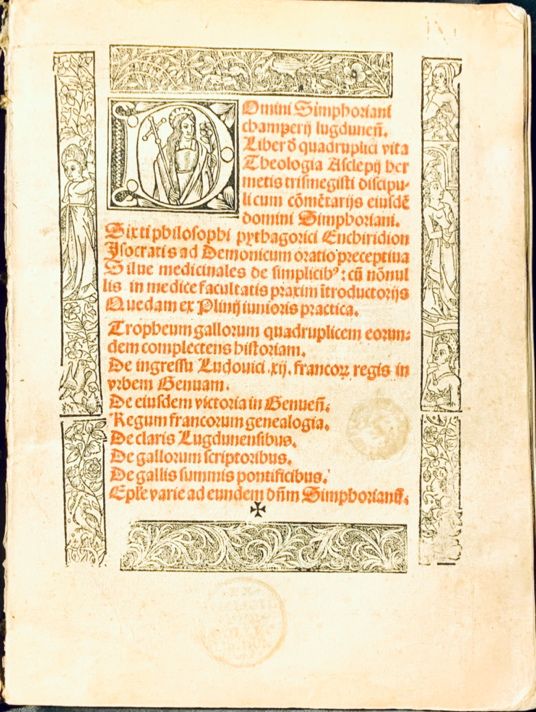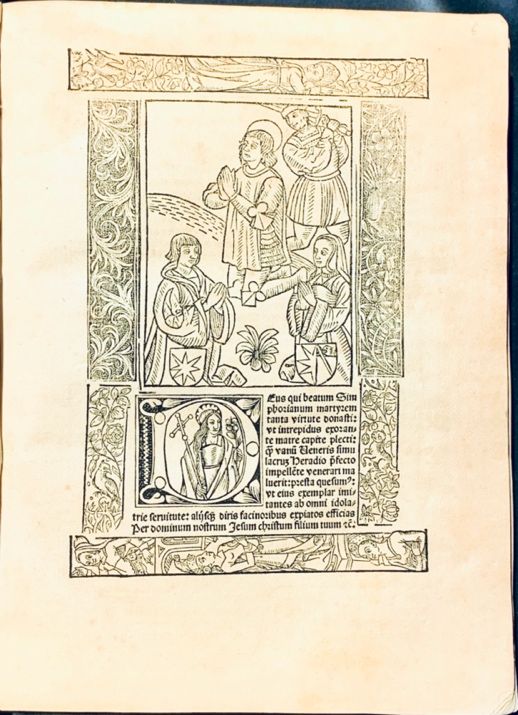

Early 16th century books still looked like medieval manuscripts. When Gutenberg invented the printing press people thought of printing as writing — artificial writing, done by a machine.
Up to 1500 many books were still decorated by hand and indeed looked like a manuscript. Manuscripts were the books that readers knew and wanted. Decorating by hand took a lot of time and it was very expensive. Printers started to decorate books themselves, using color and woodcuts. As can be seen above some of them did not care a lot about aesthetics. Broken woodcuts have been placed around the text in a careless way, as if the printer is telling the reader ‘well, if it is decoration you want, you can have it.’